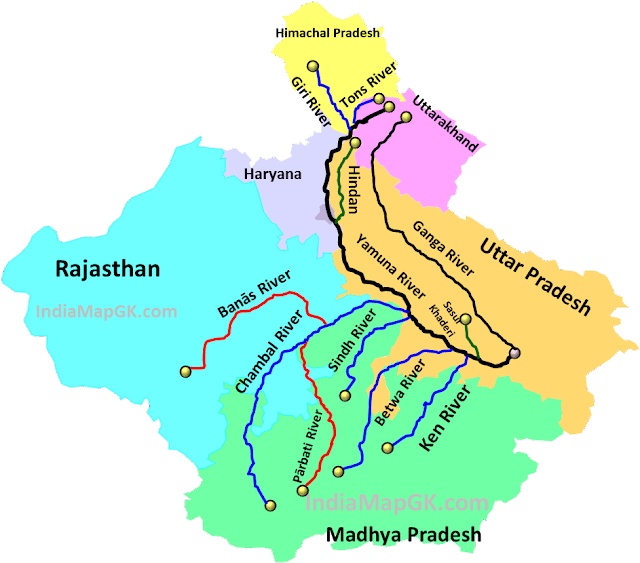
TEXT & CONTEXT: THE ANATOMY OF THE YAMUNA FLOODPLAINS.
Current Affairs for 28th July, 2023.
TEXT & CONTEXT: THE ANATOMY OF THE YAMUNA FLOODPLAINS.
Battered by heavy rains, the Yamuna looks slow, sluggish and swollen. Water levels hit a 60-year high last week.
Causes can be traced to haphazard construction activities, rapid urbanization, lack of proper housing and lax regulations.
The river system includes both water and land. Yamuna is a lifeline to five states, and its floodplains work as charging point. 2 km wide on each side of Delhi, the floodplain has been designated as the
O-Zone by the Delhi Development Authority. Through its run in Delhi, the composition of the floodplain changes from farmland to slums, colonies, flyovers and bridges.
Zone O supports a large variety of nature based livelihoods with low ecological footprint. Farmers in the bastis mostly rely on farming and some others on daily wage work, fishing, and animal herding.
The National Green Tribunal in 2016 imposed a blanket ban on agriculture related activities till the Yamuna was restored.
The planning era propelled urbanization in Delhi in the 1950s and 60s, witnessing the construction of the first thermal power plant, the Ring Road and
the Rajghat Samadhi. Then structures such as the Commonwealth Games village, the Akshardham temple complex, metro depos, luxury apartments etc. were constructed along the floodplains, choking the breathing space for Yamuna.
A river has the "right to expand" and it does so by its floodplains. Floodplains slow water runoff during floods, recharge groundwater supply and store excess water, replenishing the city's water supply.
Delhi recorded similar floods in 1978, 1988 and 1995 which inundated floodplains, impacting their health.
The Yamuna floodplain was designated as a protected area free from construction in the Delhi Masterplan of 1962. The Central Ground Water Authority in 2000 also notified the floodplains as 'protected' for groundwater management.
The draft Master Plan 2041 divided Delhi into 18 zonal areas, designating Yamuna's floodplains as 'Zone O', delineated in two parts: river zone (active floodplain) and riverfront (regulated construction allowed).
It is important to remember there than an Expert Committee in 2012 warned against any construction on floodplains. The areas proposed under the Yamuna Riverfront Development plan were within the active floodplain, which could affect the topography, increase pollution and affect flood carrying capacity.
The layers of sediments of floodplains create aquifers contributing to the river channel, which in turn rejuvenates the groundwater. Encroachments stop this two-way exchange. Hence, the river is unable to transport flood waters downstream during monsoons.
• NGT- established by the NGT Act, 2010 for expeditious disposal of cases relating to environmental protection and conservation of natural resources.
NGT is mandated to make disposal of applications or appeals finally within 6 months.
Apart from original jurisdiction side on filing of an application, NGT also has appellate jurisdiction.
• CGWA- it has been constituted under the Environment (Protection) Act, 1986 to regulate and control development and management of ground water resources in the country.
Ministry- Jal Shakti
